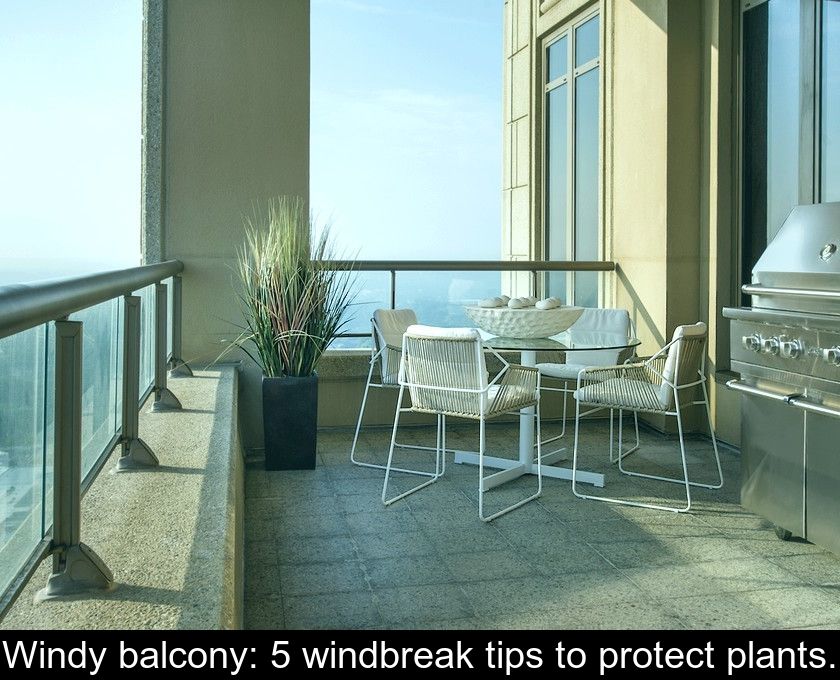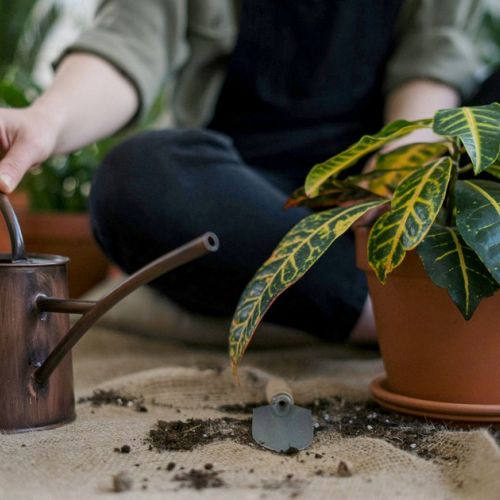Windy Balcony: 5 Windbreak Tips To Protect Plants.
All gardeners who have a balcony exposed to strong winds know it well: drafts are a scourge for plantings. If you're tired of finding broken branches, torn flower petals, and dried-out planters, here are 5 windbreak tips to protect plants on a windy balcony.
1- Use panels made of natural materials.
The first tip to protect plants on a windy balcony is to create a windbreak using panels. This type of permanent installation is essential if your balcony is exposed to a dominant wind that regularly returns.
In hardware stores, you will have a wide choice of windbreak models in different materials. However, to better integrate these protections into the landscape, it is preferable to use wooden or natural fiber panels such as coconut fibers, canes, or heather.
This first tip is one of the most effective for protecting plants, but it has the disadvantage of obstructing the view. That is why many gardeners prefer to rely on wind-resistant plants to protect their most sensitive plants and flowers.
2- Create a green wall.
The second of the 5 tips for protecting plants on a windy balcony is to plant resistant species in large containers in the front row, which will form a kind of windbreak hedge or protective vegetal wall.
This solution takes longer to implement, as it requires time for the plants to grow and fill out. However, it has the advantage of being more aesthetically pleasing and transforming your balcony into a green oasis with lush vegetation.
Among the wind-resistant plants, you can use:
• certain bamboo varieties like Fargesia and Phyllostachys flexuosa
• ceanothus
• Portuguese laurel or Prunus lusitanica
• Choisya or Mexican orange blossom
• goji berry-producing lycium or Lycium barbarum
• Escallonia
For low borders, you can use shorter but equally wind-resistant plants such as boxwood, thyme, heather, lavender, and even chives!
3- Choosing the right location for your windbreak
Whatever solution you choose to protect your plants from gusts on a windy balcony, you must make sure to choose the location of your windbreak carefully. Indeed, a windbreak is only effective if it is placed judiciously.
Before installing panels made of wood or another material, or protective plants to block the wind, you must determine which direction it is blowing. To do this, you can use a weathervane for example.
Another tip to protect your plantings is to take the time to study the situation of your balcony: remember that you must determine the direction of the winds before starting any installation.
4- Select the most resistant flowers and shrubs.
Even if it is not strictly speaking a windbreak tip, another way to limit damage on a windy balcony is to select plants that can withstand these weather conditions.
Note that it is best to avoid seasonal flowering plants such as cosmos or petunias as their petals are fragile and tear easily. Prefer less fragile flowering plants such as saxifrages, yarrow, Buenos Aires verbena, or helianthemums (plants of the Helianthemum genus close to cistus).
To prevent your plantings from being flattened by strong winds, also avoid training climbing plants on stakes. The stakes are likely to be battered by gusts. That is why it is better to use a sturdy trellis to let wisteria, honeysuckle, or jasmine grow (three climbing plants well adapted to windy situations).
5- Stay vigilant during episodes of strong winds.
Note that all these precautions do not exempt you from remaining very vigilant before and after episodes of strong wind.
To protect plants on a windy balcony, you need to adapt your gardening routine and develop certain good habits:
• use very heavy containers and flower pots
• fill them with potting soil to weigh them down
• use ropes to secure the pots to a wall or railing
• check the fastenings of the pots before windy episodes
• monitor the substrate and adjust watering after the wind passes.
Remember that wind has a drying effect on the soil and that plants on a balcony exposed to drafts can quickly become dehydrated.













